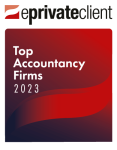22nd May 2024
When the possibility of VAT being introduced on school fees was first mentioned, there was talk about being able to recover VAT incurred on costs which were previously irrecoverable. What followed, was a certain degree of incredulity as to whether this was possible and mutterings from within the Labour Party that they would put a stop to that!
What was being talked about was not some strange tax avoidance scheme or loophole in the VAT legislation. Nor, technically, is it retrospectively recovering VAT since its actually an adjustment to the VAT that was previously recoverable even if, in some cases, that initial deduction was nil.
What was being talked about (for the most part) was the Capital Goods Scheme (CGS). This was introduced into the VAT legislation in 1990 to more accurately reflect how VAT bearing costs are used.
A fundamental principle of VAT is that VAT on costs is only recoverable to the extent those costs are used in making supplies, which are themselves subject to VAT (taxable supplies). VAT is not recoverable on costs which are used in making exempt supplies. In other words:
- If you charge VAT, you can claim it back.
- If you don’t charge VAT, you can’t claim it back, which is why historically most independent schools have only been able to recover 1-2% of the VAT they incurred on costs.
This is normal and fair because VAT is a tax on consumption and the entity making the exempt supply, in effect, become the final consumer, because they are not passing VAT on to anyone else in the chain.
For most costs, this is a simple one-off exercise of attributing the cost to its intended use. You either claim it in full, don’t claim any of it, or claim part of it if it is going to be used for making both taxable and exempt supplies, like an overhead-type cost. Once that decision has been made, and the appropriate VAT return submitted, that is generally it.
The CGS recognises that certain items of capital expenditure can be used over a period of time and are not immediately consumed once and for all. It lists certain computer equipment and costs relating to land and buildings as capital items, which can be used over a period of time. Ignore computers for now, as virtually nothing qualifies under this heading, due to an irony to which I will return.
With regards to land and buildings, any piece of land or civil engineering work, or works to a building which costs £250,000 or more is included in the CGS. This includes the purchase, construction, alteration, extension, refurbishment or fitting out of the building in question.
The CGS deems such capital assets to have a 10-year life, which commences on the date of first use of the item. The first VAT period (or interval’) within the 10-year adjustment period commences on this date of first use and ends with the end of the taxpayer’s VAT year. Thereafter, the remaining nine intervals correspond to the VAT year, so, in practice, the 10-year CGS adjustment period is only ever nine and a bit (Harry Potter fans will be delighted!).
A VAT year ends in the spring VAT return quarter (March, April or May) depending on your VAT return stagger, unless you have specifically agreed with HMRC that it should end at some other date.
I said earlier that, strictly speaking, the CGS does not deal with retrospective VAT recovery and this is because in the first interval, you fully or partly deduct VAT or not in the same way as any other item of expenditure:
- If you were going to use a building only for making taxable supplies, then you claim all the VAT back.
- If you were going to use it only for making exempt supplies, then none of the VAT would be recoverable.
- If you were going to use it mainly for making exempt supplies, but you used it for making some taxable supplies, then you may have deducted 1-2% of the VAT you incurred.
The difference starts at the end of the second interval. Here, you look the use to which the item has been put in making taxable supplies in this second interval, and you compare it to the first interval. If it is the same, then no adjustment is due.
However, if the item is being used to make more taxable supplies, then you can recover some of the VAT you originally did not recover, and if it is being used to make fewer taxable supplies, then you must repay HMRC some of the VAT you originally reclaimed.
This process of adjusting the initial deduction of VAT is repeated until the end of the 10-year CGS adjustment period, and each year 1/10thof the VAT originally incurred is subject to adjustment.
By way of a simple example, if a school constructed a sports hall for £2m plus VAT, and it was originally going to use it solely for making exempt supplies, then none of the £400k VAT (20% of £2m) would have been recoverable.
If after two years, the school started to let out the sports hall to third parties for use after school by way of taxable supplies, and the use was 2% of the total turnover of the school, then the school would look at the £400k VAT it incurred. Of this, 1/10th or £40k would be subject to adjustment and, since the taxable use has gone from 0% to 2%, the adjustment percentage is 2%, so 2% of £40k (£800) would now be recoverable.
This exercise would be repeated for the remaining intervals, always comparing the use in the current year to the initial use (0% in this example) in making taxable supplies.
The vast majority of CGS adjustments are of this type of magnitude, since the use of an asset in making taxable supplies generally only varies by a percentage point or two. But, if VAT is introduced on school fees, then the average recovery rate for an independent school is likely to increase from 1-2% to more like 98-99%, with correspondingly large adjustments.
By way of example, a school has a £2.5m build with £500k VAT which was first brought into use in, say 2016, then 1/10th of the VAT is £50kand if that school has only ever used the building for making exempt supplies, and going forward will use it solely for making taxable supplies, then it stands to recover £50k (100% of 1/10th) a year for any remaining intervals. Depending on the timing of an election and the introduction of VAT, it is possible that the year ending in spring 2025 might still be in time for an adjustment.
Could an incoming Labour Government seek to block this? It cannot be ruled out, but it would probably cause more problems than its worth. Because the CGS is an adjustment mechanism to track taxable use, if it was abolished, then organisations using buildings for making exempt supplies, such as those in the Financial Services sector, would simply try to find a way of making the first use taxable. This would crystallise VAT recovery before reverting to using CGS items for their exempt supplies. The VAT at risk then would dwarf whatever amounts schools might be able to recover through what is an integral part of the VAT system.
I also said that there was an irony here which I would return to, and that is the fiscal drag so beloved of Chancellors of all political parties. Fiscal drag is the term given to the phenomenon of freezing thresholds, allowances, etc. Over time, this causes more and more people to be dragged into paying tax. The current hot potato is the triple lock which has increased pension income, but Income Tax allowances have been frozen, so more and more pensioners will end up having to pay tax on their pensions.
The irony here is that the £50k limit for a single item of computer hardware means that the CGS would now only apply to a super-computer, and so, in reality, computers hardly ever get caught by the CGS. Conversely, when the CGS was introduced in 1990, £250k would have been a decent amount of money to spend on a building. But having kept the limit at that amount, instead of increasing it by inflation, has simply meant that more items will now be within the CGS and more adjustments will be due back to schools. Fiscal drag in reverse – bless!
Lastly, what action should schools be taking? Well starting to identify any CGS assets which may still be within the 10-year adjustment period is a start. At the earliest, it will apply to items brought into use in 2016, but obviously it could be later depending on when an election is held. It would also make sense to ensure that you can evidence the spend and have all the relevant VAT invoices to hand.
You could wait, but if you don’t have the invoices, and the contractor who did that refurbishment goes out of business in the meantime, it will be tricky. Also, what if the bursar who can remember all the building work over the last 10 years is due for retirement this October? Personally, this is something I would not be inclined to defer.





